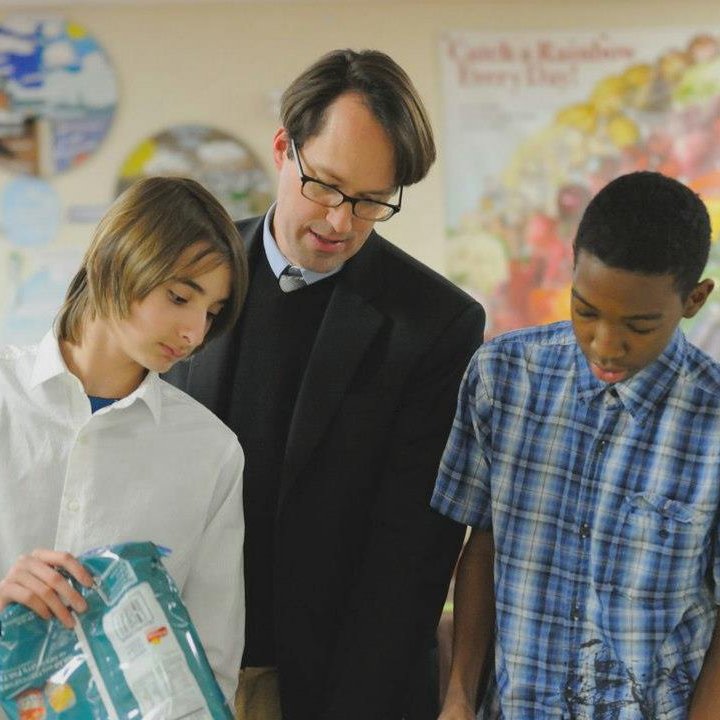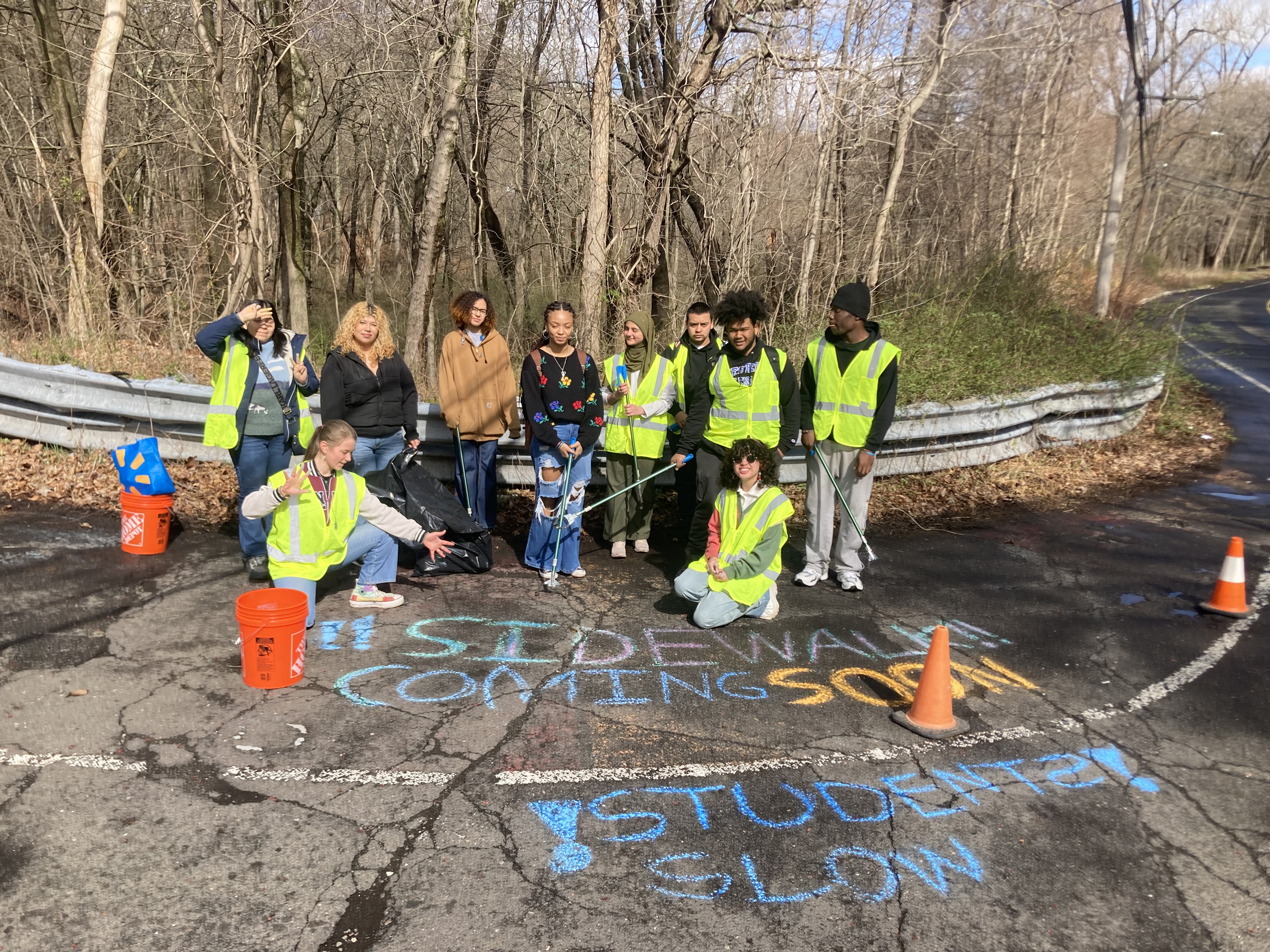
Wearing bright yellow safety vests, Aurelio, Claire, and Adriana lead their classmates across the narrow bridge that connects Common Ground High School's campus to the rest of the West Rock neighborhood. Hugging the guardrail, they are equipped with the tools they've assembled for the day's work: chalk, garbage pickers and bags, and homemade traffic signs sporting messages like "Sidewalks Coming Soon!!" Just thirty short minutes later, they assemble for a group picture with the results of their work: bags full of illegally dumped garbage and a colorful message for city leaders and fellow West Rock stakeholders, thanking them for their commitment to close the sidewalk gap between Common Ground, Southern Connecticut State University, and local elderly and public housing developments. Claire sends the group photo off to City Engineer Giovanni Zinn, Alder Honda Smith, and Mayor Justin Elicker -- one step in helping ensure the city moves forward with sidewalk construction this year, a commitment that Claire and her classmates helped to secure.
The work that Aurelio, Claire, and Adriana lead on this crisp spring day is one important step in a larger environmental problem-solving process. They and their fellow students in Common Ground's Early College Sustainable Design class are testing one of more than a dozen student-developed proposals for making Common Ground's campus a healthier, more sustainable place. Before and after getting to this milestone action moment, these emerging environmental leaders take several other steps in a design thinking process:
- Empathizing with their fellow students and Common Ground staff -- designing and conducting surveys, sitting down to interview relevant staff, diving into existing data like school utility bills and architectural plans.
- Defining the problems that need to be solved -- presenting the results of their audit of existing environmental conditions in the form of presentations, walking tours, and interpretive signs for students and staff.
- Ideating potential solutions to these challenges -- inspired by their audit results and visits to other buildings that model health and sustainability.
- Developing a prototype that they can actually implement. Like the action Aurelio, Claire, and Adriana led, most prototypes intentionally fast, a dress rehearsal for more similar efforts with students in the week to come. "Fail quickly" is a central premise of design thinking.
- Testing this prototype -- developing and implementing a data collection plan to see if their prototype worked as intended, and whether it should be scaled up.
- Iterating their prototype based on the results of their tests, and starting the process over again!
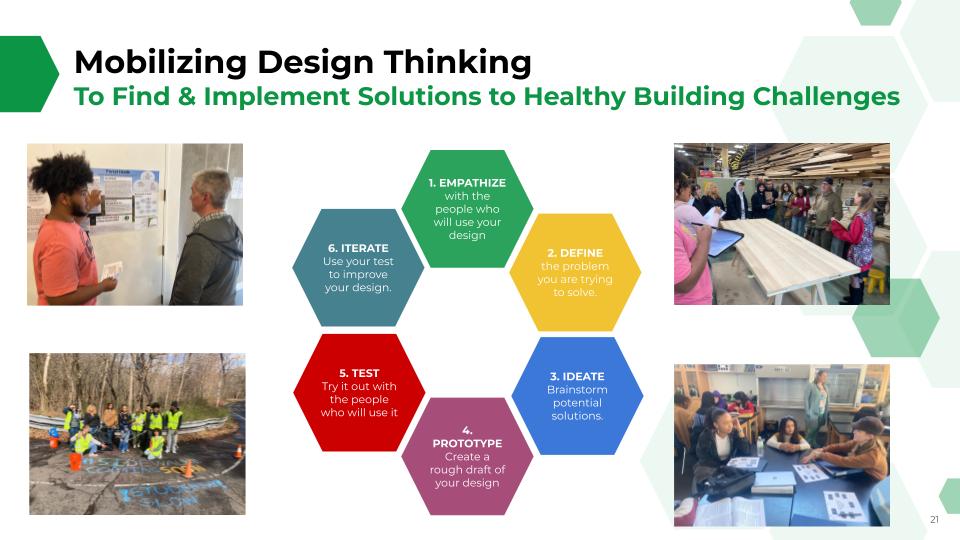
Based on their comprehensive audit of environmental health and sustainability on Common Ground's campus, Sustainable Design students choose to take their environmetal problem-solving work in many directions. Students designed and implemented forest health improvement efforts – including removing invasives that threaten canopy trees, creating forest restoration zones in heavily trafficked areas, protecting saplings from deer browse – all contributing to the clean air and clean water benefits of healthy urban forests. They successfully designed and piloted efforts to reduce food waste and encourage composting – through a share table where students could leave school lunch they didn't want or need, and improved signage for school composting. They also implemented plans to reduce the use of overhead lighting, take advantage of daylighting in classrooms, and install energy-efficient, lower-wattage lighting that created an environment more conducive to learning. They worked with our site staff to identify opportunities to optimize the use of our HVAC and temperature control systems to create an environment conducive to learning while also reducing energy use.
Because Common Ground students have been engaged in environmental problem-solving work on our campus for years, each new year's work builds on what came before. This year's Sustainable Designers learned from and followed up on a trash audit that students conducted back in 2012. To learn about sustainable building features in Common Ground's Springside building, they watched videos created by earlier generations of sustainable design students. They looked at results of surveys that two previous years of students had conducted, and updated the survey for a third administration. Rather than starting from scratch on their environmental audit, their first step was to look back at the results of the previous year's work, and to use that as a starting point and source for their own analysis. Before starting their own design posters, they used the project rubric that teachers use to grade their work to evaluate posters from earlier generations of students. Claire, Aurelio, and Adriana studied the efforts of previous students to gain city commitments -- analyzed what worked, and planned what comes next. Students know their work is part of something bigger, and become more confident in their own problem-solving skills, and the school's commitment to take their work seriously, when they see that their peers have done it before them.
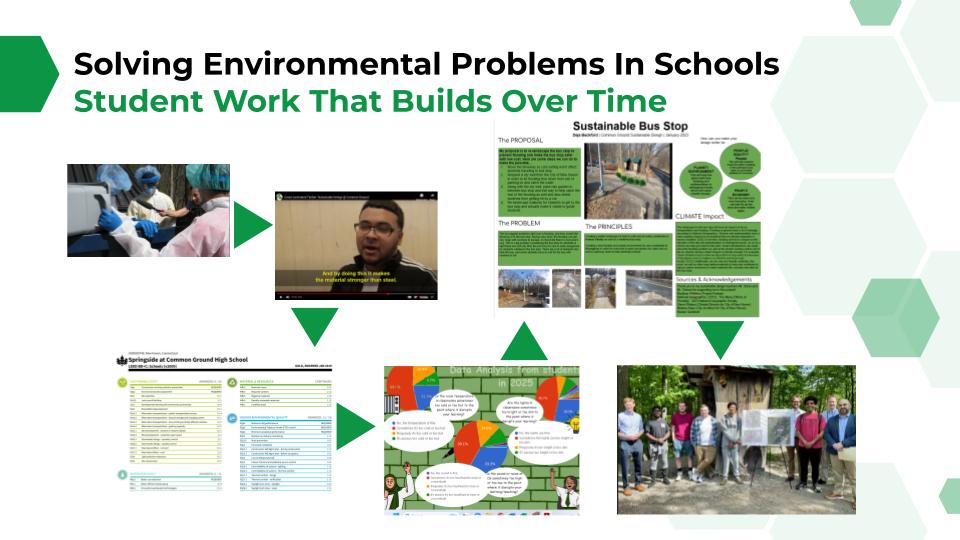
A few weeks after their work along Springside Avenue, Sustainable Design students gathered in Common Ground's multipurpose room. Posters sharing their designs lined the walls and the room filled up with real-world audiences for their work. Nearly every student and staff member got a chance to see their posters and presentations, as did students and teachers from a local K-8 school, and representatives from a local college's sustainability office. Claire, Aurelio, and Adriana got to share the good news that the city had committed to moving forward with the construction of real sidewalks, rather than their chalk and sign versions. And students gathered feedback from audience members to help them make one more round of improvements to their work -- because the iterative design process never ends!
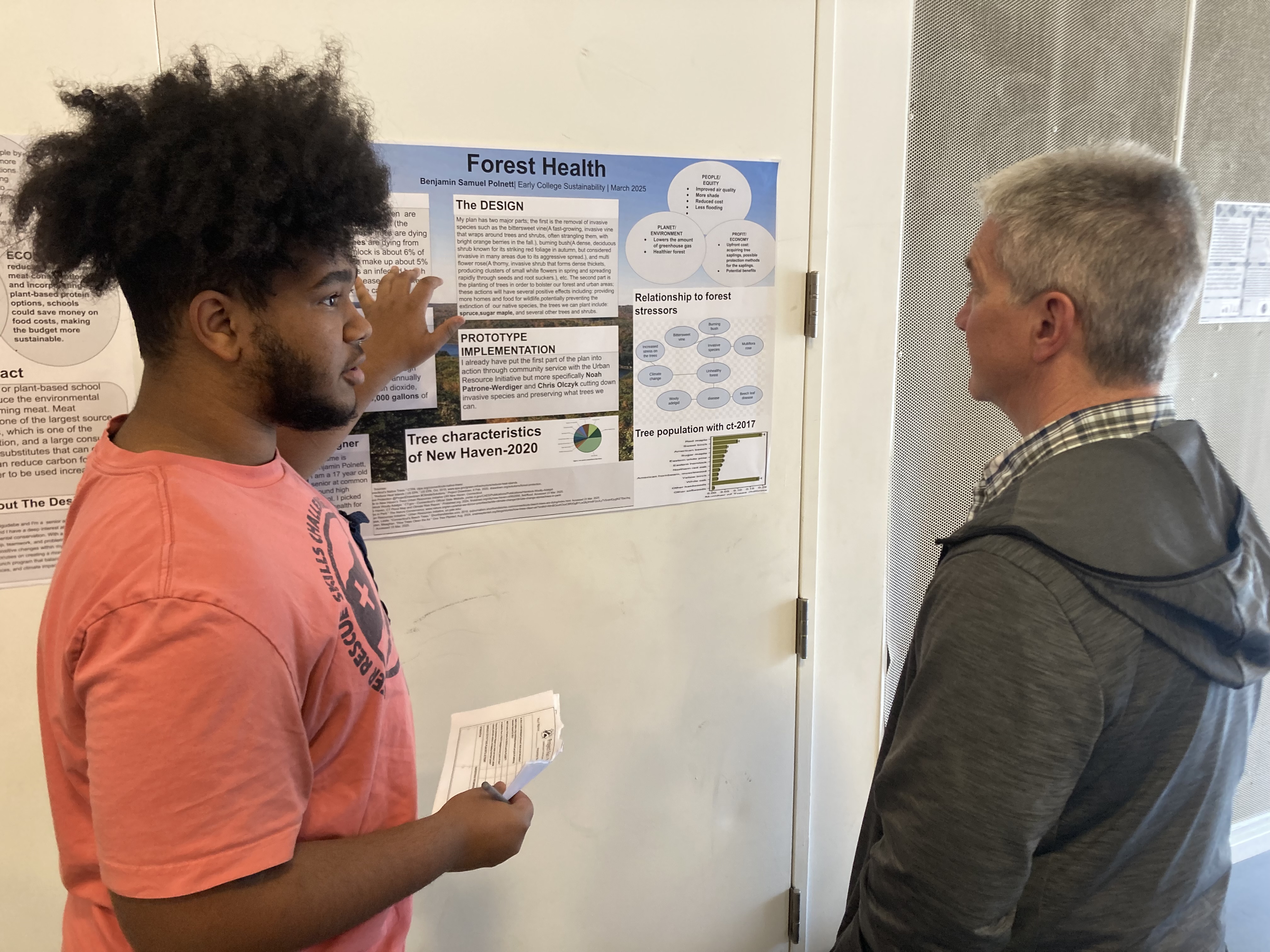
Does this student-led problem solving really make a difference? Evidence to date indicates that helping students to get all the way from empathy to implementation is a challenge -- and that they can do it! It was when students started putting up their own slow school zone signs, and inviting local media, that city officials committed to finding the funds needed for traffic safety improvements. The available data support impact stories like this one, as well. In Winter 2024 and again in Winter 2025, Sustainable Design students administered a school-wide survey focused on key aspects of indoor and outdoor environmental quality – building on and replicating survey research conducted by their peers in the previous year’s sustainable design class. From 2023 to 2024, the percentage of students and staff who felt safe taking public transportation to campus increased by nearly 10 percentage points, the result of student-led advocacy that resulted in new sidewalks and speed bumps around Common Ground’s campus. Other 2024 indicators set the baseline for future student-led improvement efforts; 33% of students and staff say they experience eye strain and allergies, and 61% say they experience headaches, as a result of the environment in Common Ground’s buildings. By winter 2025, the number of students and staff reporting each of these problems had dropped significantly – 25% of students reported eye strain, 16% reported problems with allergies, and 33% of students reported problems with headaches in Common Ground’s buildings. We need more data to be sure of the role student leadership plays in these improvements, and there's still lots of progress to be made – but we are glad to see this movement toward a healthier school.
Explore an environmental problem-solving toolkit, sharing the curricula and resources that helped these students design a healthier school environment.

